Greetings everyone! This has been another one of those months where the general timings and various circumstances have meant we’ve not managed to get the newsletters done to the regular schedule – so enjoy this newsletter for both June and July! The biggest news since the last newsletter is obviously the release of Freeplay mode on the main branch. It’s been available for everyone for several weeks beforehand in beta form, so those of you who were most keen are likely to have been fairly familiar with it when it finally landed for everyone on 2nd July. We’ve also got some great progress to show you with our next Formicarium update – Leaf Cutters ants!
Freeplay Released!
The reaction to Freeplay has been very positive – you’ve been enjoying these longer-form games and the ability to save your progress in it has been welcomed warmly (even if getting the save system working has accelerated John’s aging process!). There’s still plenty we are planning to do with Freeplay mode – balance changes, more maps, more environments, more creatures, fully autonomous enemy ant colonies – all that good stuff is still in its future. For now, John has joined Liam and Matt to crank up development on the next set of levels, but Freeplay will be revisited soon. After new content is created for the next set of levels, it will be integrated into Freeplay like the content from the first two Formicarium tiers is currently.
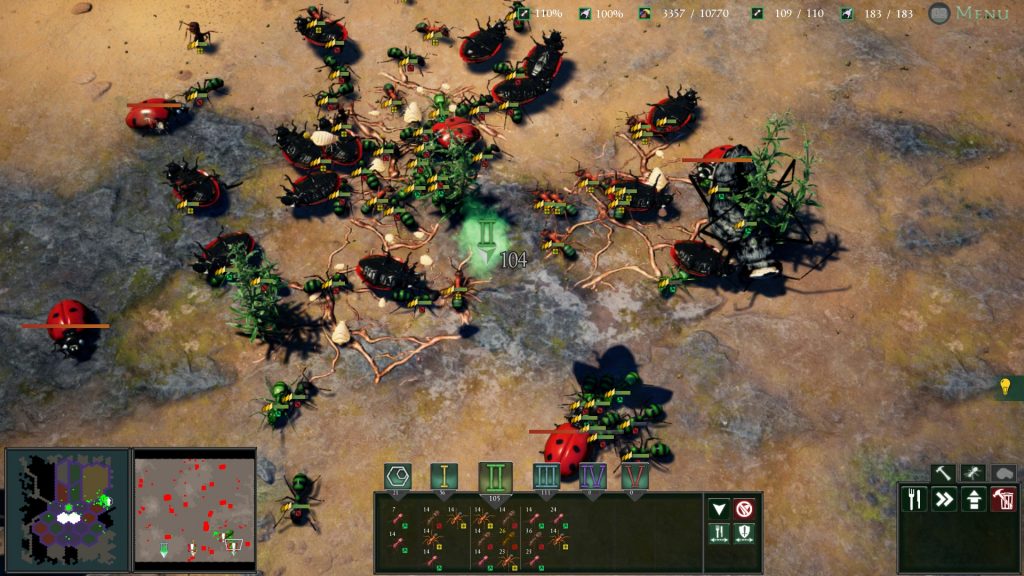 Some crazy late-game Freeplay action here from Steam user Jumbo6565
Some crazy late-game Freeplay action here from Steam user Jumbo6565
It’s been great fun seeing your Freeplay setups, from those who just want a nice chilled out, slow base-building experience to the fearless guys who crank up the difficulty all the way from the start! The current documented high score for a finished game that starts at max difficulty is very nearly 4 million on our official forums by Balanite – can you do any better?
Leaf Cutter Progress
Those of you who have been following us on our social media accounts likely know that we’re deep into the creation of the next set of levels now, and we have plenty of art assets that the talented Matt has been working on. Leaf cutters are our next species of ant – Atta cephalotes to be precise, a South American species with some impressive traits. They’re fungus farmers – they gather leaves from the surrounding environment and place them in chambers in their nest, where a fungus that has a mutualistic relationship with the ants will grow. The ants ensure the propagation of the fungus, and the fungus provides the ants with food.
Boasting four different worker castes, introducing this species to the game promises to bring some much-needed natural increase in complexity as the player progresses through the Formicarium campaign. Below are all of the completed ant models and a description of the caste they represent. Please note that in these pictures we’ve put the ants in the beach environment, for the sake of having them not floating in space – in their final levels they’ll inhabit an entirely new biome – the rain forest.
Queen
No leaf is safe …. bow down to your Queen.
Despite forming some of the most complex societies on Earth, Atta cephalotes is not a multi-queen species as many ants are. There is one queen who can live for up to fifteen years and she’s rather large. Below you can see her compared to our fictional Formica ereptor queen (the species that inhabits your Formicarium).
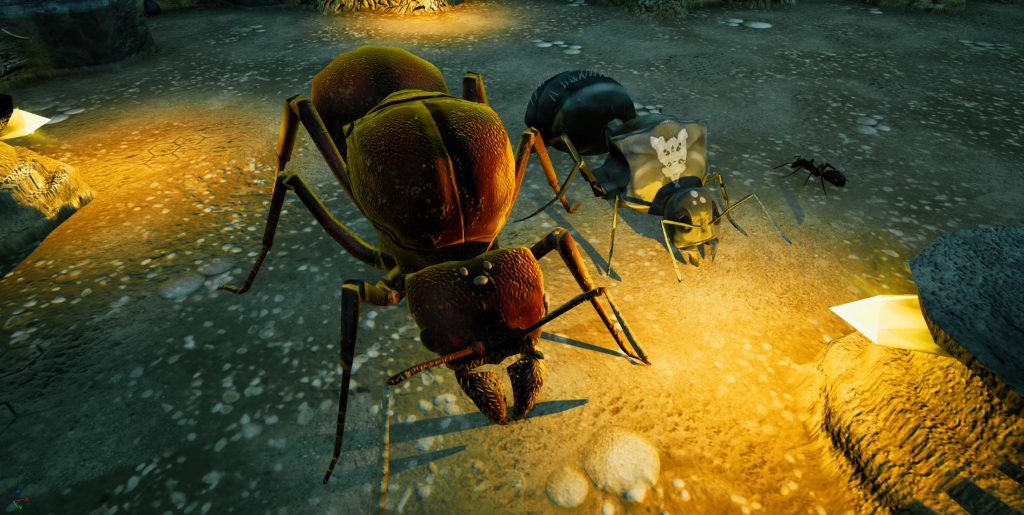 The Leaf Cutter queen compared to the Formica ereptor one
The Leaf Cutter queen compared to the Formica ereptor one
Minims
The smallest members of Leaf Cutter society – the minims – are positively dwarfed by their mother. These tiny ants rarely, if ever, leave the nest – instead they work tirelessly to tend to the fungus gardens the Leaf Cutters rely upon to survive.
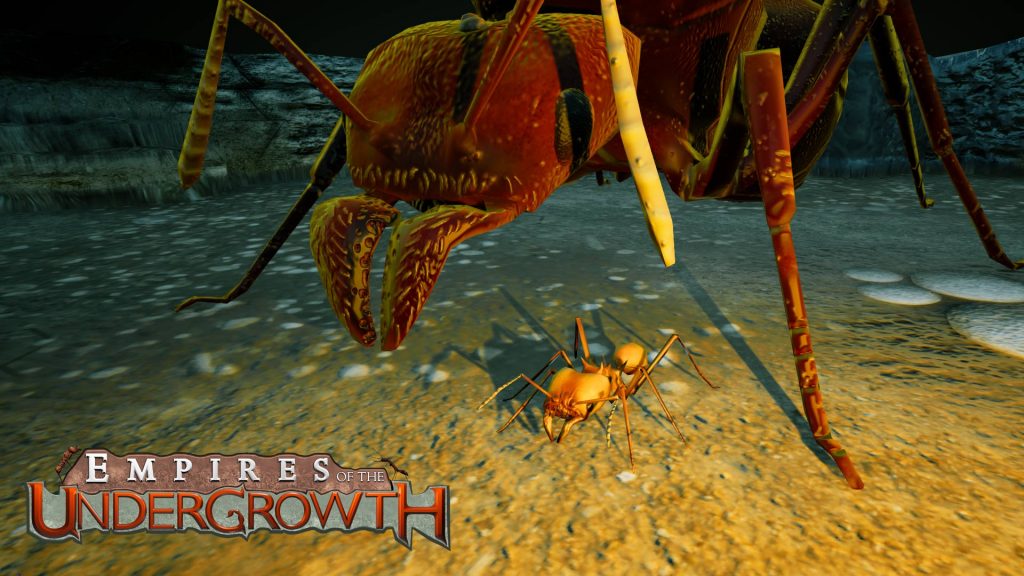 Minims are tiny compared to all other castes – here’s one with the queen
Minims are tiny compared to all other castes – here’s one with the queen
In our current design the minims are not directly controllable by the player – in fact they’re so tiny that enemies will practically ignore them too; but they can get damaged by crossfire. Rather than having their own brood chambers, a number of them will spawn for each brood tile placed for another caste. They’re not just there for decoration, though – they have an important role in mulching the leaves gathered by other castes into the final form that can grow fungus.
Minors
After the minims, the next members of Leaf Cutter society are the minors. Being substantially bigger than the minims, these ants join the foraging trails, tend to larvae, cut and collect leaves, and help defend the nest from predators and other threats.
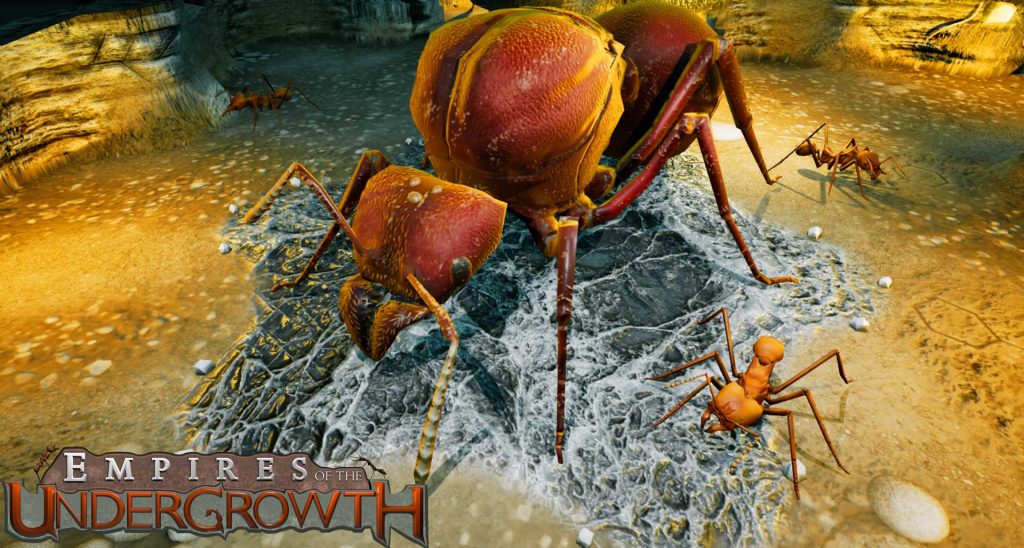 Minors will take on the EotU worker-like role
Minors will take on the EotU worker-like role
Leaf Cutter minors will take on a very similar role to the worker ants from the current species. Versatile units which form the backbone of the work force.
Mediae
Next are the medium-sized media ants. These bad girls are much bigger than the minors, and they pack a serious bite with their slicing jaws. Formidable fighters in their own right, they’re perfectly adapted for a life of cutting and collecting foliage for their colony’s fungus gardens. A solid combat unit with strong resource gathering potential.
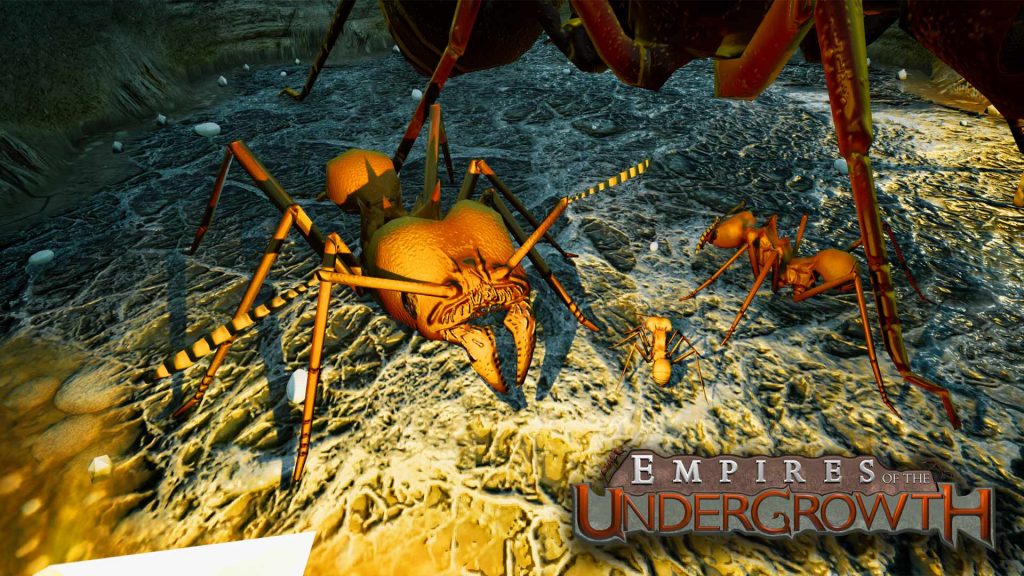 Now we’re getting to the big girls!
Now we’re getting to the big girls!
Majors
In awe of the size of these ladies. Meet the Leaf Cutter majors – the deadly tanks of Atta cephalotes, and the largest of their species with the exception of the queen. These absolute units are huge soldiers – whilst they will collect leaves for the fungus gardens their main role is to fight and protect the colony. Huge muscles are housed in their heads which power mighty crushing jaws – they can easily cut through leaf, chitin and skin alike.
 A Leaf Cutter major slicing effortlessly through foliage
A Leaf Cutter major slicing effortlessly through foliage
Leaf Cutter majors will have either a “taunt” or a “stun” ability (player’s choice, in the same way as rapid fire or mortar for the wood ants), representing their imposing presence on the battlefield. Taunt will make enemies want to attack them preferentially, whereas stun will temporarily disable nearby foes. Combined with their high health pool, this means they can efficiently distract whilst other units such as mediae get in extra damage to the affected creatures. They will also have an extremely powerful attack – although it is slower than that of their smaller brood mates.
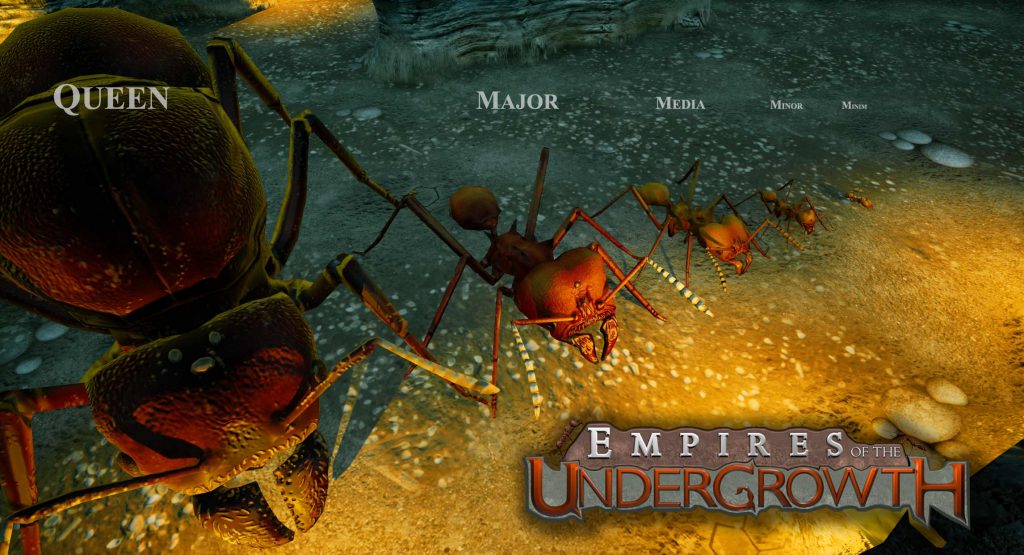 A comparison of all of the Leaf Cutter castes
A comparison of all of the Leaf Cutter castes
As you can see, Atta cephalotes is our first truly polymorphic species, with clear caste divisions throughout the colony. Although we do have “workers” and “soldiers” in the existing species, we’ve taken a little artistic license there since most Formica species are relatively homogeneous. Leaf Cutters show true diversity, and we’re excited to get that into the game properly.
We’re always a bit hesitant when it comes to estimating release dates for things – in no small part because we’ve proven ourselves to be pretty terrible at it. The plan on our road map says late summer – and that’s still our aim. As always, this is not a promise – software development is such a complex subject that you can easily spend much longer on a problem than you thought you’d need to (and vice versa). That said, Liam will be recording with our voice actors soon and is making daily strides with his systems for fully-fledged enemy colonies, John is feeling energised after being able to work on something other than Freeplay and getting stuck into some Atta cephalotes AI action, and Matt is pumping out artwork and novel solutions to difficult stuff like vertical ant movement like it’s his job. Which it is.
Screenshot Central
We sometimes like to show off some of the more aesthetically pleasing screenshots uploaded by our community – do it through Steam (F12 by default; it’ll give you upload options when you end the game session), or you can email them to mike@slugdisco.com.
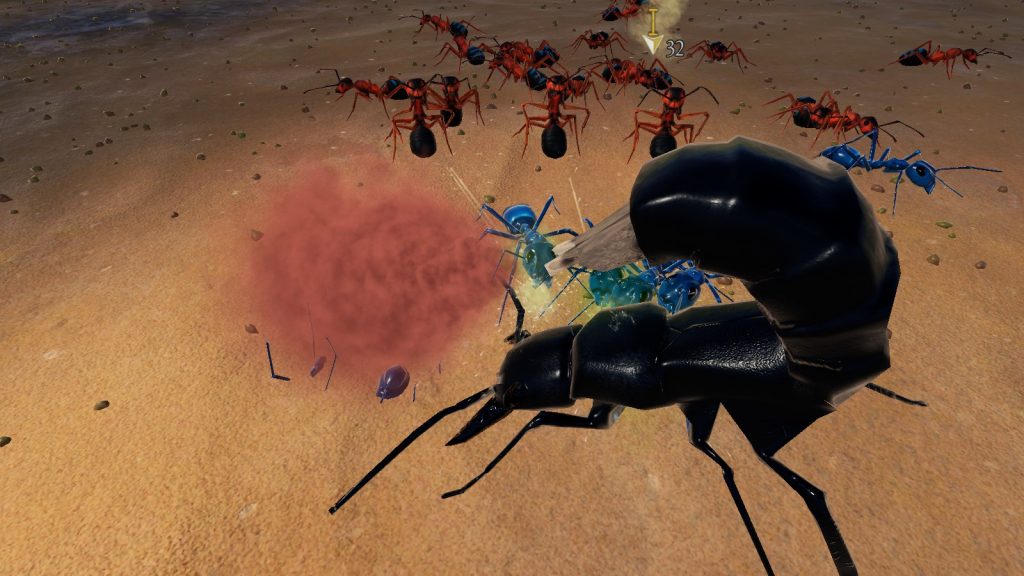 Good capture of Devil’s Coach Horse beetle using its spray attack by KLOGO-hoPPeR
Good capture of Devil’s Coach Horse beetle using its spray attack by KLOGO-hoPPeR
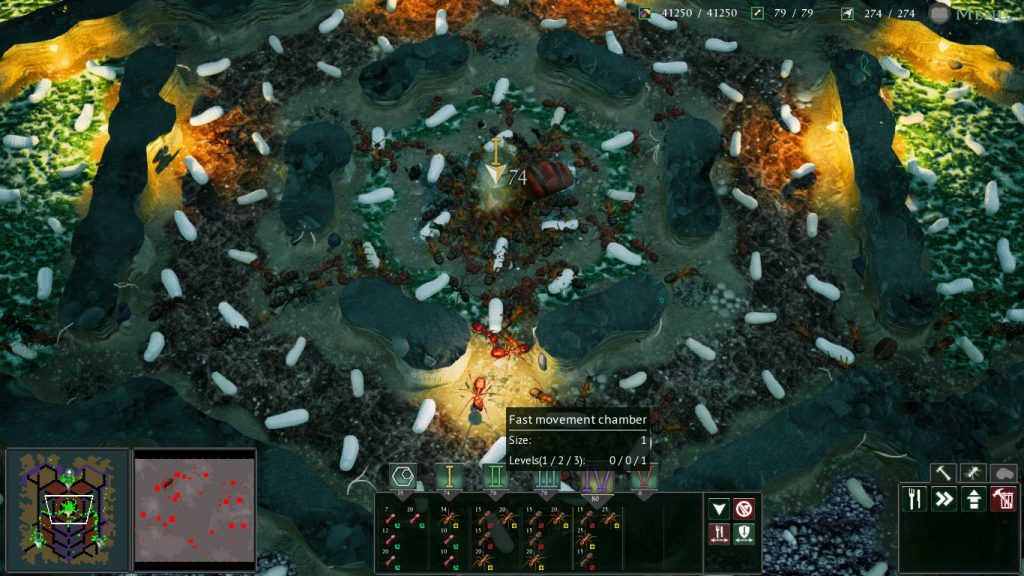 A rather pleasing nest layout from Roflcopterkklol – almost looks like a beetle!
A rather pleasing nest layout from Roflcopterkklol – almost looks like a beetle!
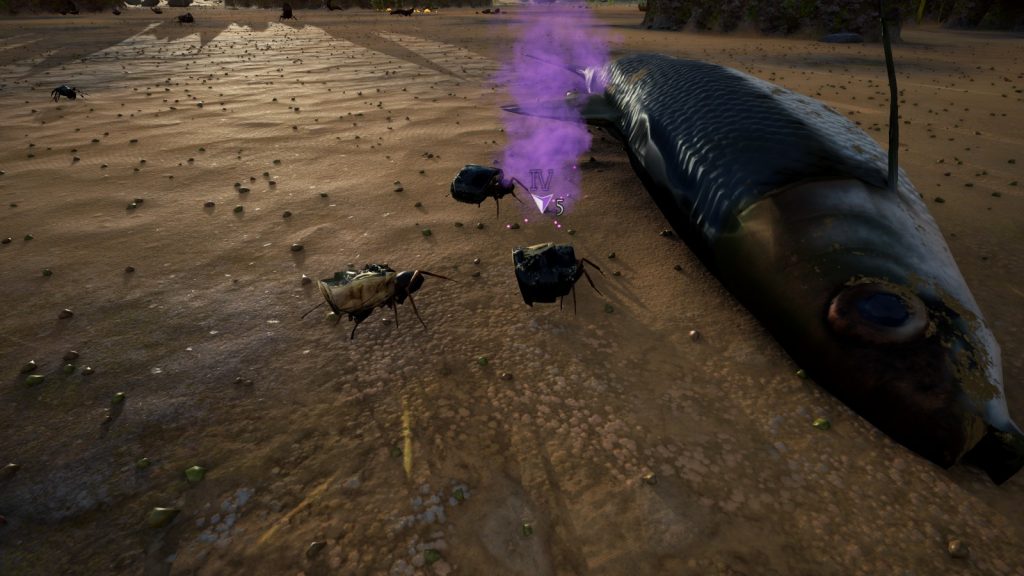 The low light of dusk, a splash of colour from the marker, a pleasing snap by Sammiday
The low light of dusk, a splash of colour from the marker, a pleasing snap by Sammiday

